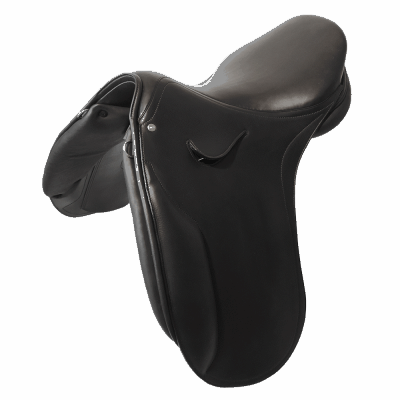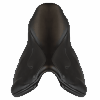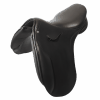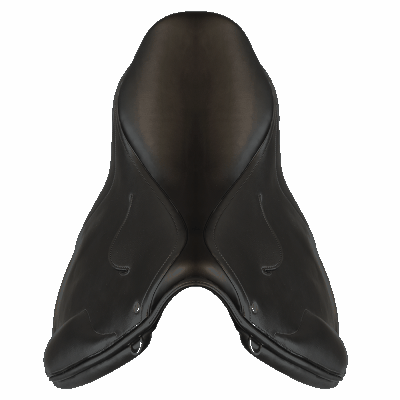Macel Dressage USA/Canada Distribtors

MACEL Samba SADDLES
Science Of Motion® the USA/Canada wholesale and retail Distribitors of Macel Saddles
Our Canada Ambassador
Why the Macel Samba?
“The last saddle you will ever need”.
Samba and Samba S

many customizations
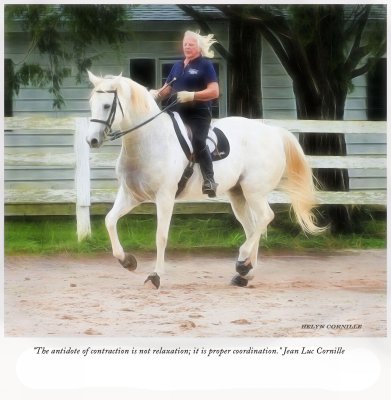
Jean Luc & Chazot
Contact Helyn helyn@scienceofmotion.com for more information.
Equine Ergonomics
“It is through science that we prove, but through intuition that we discover.” (Henri Poincare)
In 1968, Philippe Guillot de Suduiraut, former ecuyer of the Cadre Noir de Saumur, intuitively felt that shifting the rider’s weight, as was taught at the school, was not in line with actual functioning of the equine back. Saddles were designed for the driving seat, high cantle and thick padding. They were based on static thinking that created shifts of the rider’s seat forward. Thick padding caused transversal rotations altering the dynamics relation between the horse and the rider.
In 1964, Richard Tucker completed the first dynamics analysis of equine thoracolumbar column. “An initial thrust on the column is translated into a series of predominantly vertical and horizontal forces which diminish progressively as they pass from one vertebrae to the next”. (Richard Tucker, Contribution to the Biomechanics of the vertebral Column, Acta Thoeriologica, VOL. IX, 13: 171-192, BIALOWIEZA, 30. XL. 1964) At the contrary of previous beliefs, it is not the lower line, abdominal and pectoral muscles, that flex the upper line, but instead it is the work of the muscles situated on and around the vertebrae, which convert the thrust generated by the hind legs into horizontal and upward forces. It was necessary to update the design of the saddle to actual knowledge. This is how the Macel dressage Samba was created. Later, the model was updated to advanced understanding of equine biomechanics by Macel’s master maker and manager Patrick Fesquet. Patrick’s craftmanship upgraded a dynamic wonder into a piece of art.
The saddle has to be comfortable for the horse but yet stable and close contact. The problem was resolved by an ingenious design of the tree and the panels in contact with the horse’s back. The center of gravity of the saddle has to be in the middle allowing the rider to find neutral balance; a balance exactly at the vertical of the seat bones without any forward or backward shift of the rider’s weight. It took two years to design a saddle seat that allows the rider seat to remain undisturbed by the saddle.
As lateral bending of the equine thoracolumbar spine occurs mostly between the rider’s upper thighs, it was necessary to design a seat allowing comfortable and steady contact of the rider’s upper thighs. This was achieved through comfortable but thin padding under the thighs and a judicious curvy design of the panels in contact with the horse’s back. Several ingenious details including the material on which the girth is attached and the single panel flap allows for stability and accurate feeling.
“Any intelligent fool can make things bigger, more complex, and more violent. It takes a touch of genius - and a lot of courage - to move in the opposite direction.” (Albert Einstein)At a time where deep seat, thick padding and enormous knee pads are in fashion, it took a touch of genius and courage to move in the opposite direction. Patrick added then a touch of class through superb craftmanship.
It was clearly written in the stars, that a saddle designed in respect of actual biomechanics knowledge, the Macel Samba, and a school of thought upgrading riding and training principles to actual knowledge, the Science of Motion, would meet and further each other’s research.
The most up to date definition of the rider’ seat is, harmonized tensegrity. Tensegrity is the phenomenon allowing joints and other structures to sustain considerable forces without reaching a size, mass and volume hampering the capacity of rapid movements. Tensegrity ensure efficiency of the human body as well. Nuance in muscle tone is where the true relation between the horse and the rider occurs and the saddle needs to allow a relationship based on subtle nuances in muscle tone without any interference of the rider’s weight. For this reason, the seat is designed placing the rider in the middle of the saddle and not on the back as commonly designed. For this reason, the cantle is low and does not push the rider’s seat forward.
“A major cause of lameness is lameness.” (James R. Rooney, Biomechanics of lameness in horses, 1976) The kinematics abnormality is there first and identifying the source of the kinematics abnormality allows full expression of the horse talent and prevents injury. As the source of limbs kinematics abnormalities is, in a very large percentage of the cases, thoracolumbar dysfunction, A saddle, close contact enough to feel proper function or dysfunction of the equine thoracolumbar spine, is necessary. Also essential is a saddle stable enough to do not distort, through transversal shifts, the minute movements of the horse back. Also crucial is a saddle avoiding any involuntary back to front shift of the rider’s weight. This is why the knee pads are comfortable but discreet and this is why the curve of the seat is relatively flat.
“Premier athletes can be dysfunctional. In fact, many of the most gifted athletes are incredibly dysfunctional…The potential benefits of innovative techniques, advanced technology and new training methods cannot -and do not- compensate for dysfunctional athletes’ inability to perform to their fullest potential.” (Pete Egoscue, Pain Free Thru Motion) Talent can compensate for dysfunction but only until the repetition of the dysfunction causes lameness. It is primordial that the saddle allows an equitation preparing efficiently the horse physique for the athletic demand of the performance, starting with subtle orchestration of the back muscles.
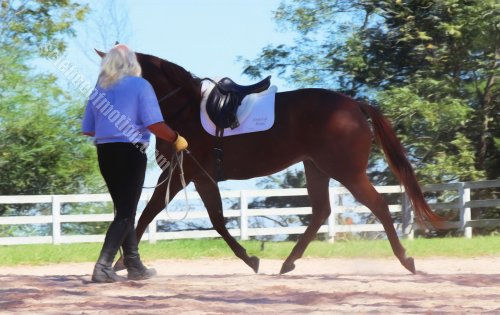
Motion Microscope Therapy
Motion microscope therapy is a branch of the science of motion that studies, like under the microscope, the kinematics abnormality altering the horse’s performance and inducing injury. Instead of focusing on the symptom, Motion Microscope Therapy identifies the root cause and focus on correcting the source of the problem.
Quite often, lameness commences as a kinematics abnormality. At this point aberrant kinematics is not labelled as lameness but, its repetition induces pathological changes; injury. Corrected early enough, the kinematics abnormality does not evolve into injury. Once repetitive abnormal stresses have created damage, treatments are necessary but correcting the kinematics abnormality remains a priority. Walking a horse, post injury, a progressive number of minutes, does not correct the kinematics abnormality that caused the injury in the first place. Rehabilitating the horse demands addressing and correcting the root cause. In hand technique, lunge technique and of course riding technique, are involved.
As most limbs kinematics abnormalities originate from thoracolumbar column dysfunction, a saddle allowing subtle perception, precision and steady connection with the back muscles is a perquisite. We have found that the Macel Samba, both dressage version and upcoming jumping version, is by far, the best saddle for sound equitation.
Dysfunction can be compensated by the horse’s talent but rehabilitation demands an equitation correcting the dysfunction. We regard sound equitation as classical, as for us, classical is upgrading the wisdom of our ancestors to actual knowledge. Experience and science created the Samba and the Samba is the best tool for an equitation upgrading experience with modern science.
The rehabilitation of kissing spine for instance, demands an equitation that saddles, which have surrendered to fashion, do not permit. There cannot be any back to front shift of the rider’s weight. There cannot be any transversal shift of the saddle. Precision and stability are essential. Motion microscope therapy approaches kissing spine as a muscular issue; contraction, extension, lateroflexion, inverted or excessive rotation of the thoracolumbar spine create intermittent contact of the dorsal spines. The motion microscope therapy approach identifies and corrects the muscular dysfunction causing the dorsal spines to touch. The therapy often commences in hand, and/or at the lunge line applying a very specific technique. The therapy continues under the saddle educating proper coordination of the back muscles. It is a form of equitation where the rider’s tensegrity harmonizes with the horse’s tensegrity. It is doable in every saddle but more difficult when the rider has to fight the saddle as it continues to place the rider in driving seat position. Other therapies are offered. The fact remains that as long as the muscle imbalance leading the dorsal spines to contact is not corrected, the problem will likely come back.
A sound and classical equitation is also sober and elegant, as is the Macel Samba.Jean Luc Cornille
The Macel Samba saddle is recommended by Jean Luc Cornille, Maitre (Master) from the Cadre Noir de Saumur and the founder of Science of Motion®.
Made In France
"Conceived in tradition and perfected with time, Macel Saddles are hand crafted in France and desired globally. Macel's meticulous attention to detail, right down to a single stitch, is their mark of excellence."
French saddlery is the result of traditional craftsmanship which is envied throughout the world. It is crucial to preserver it, to protect its secrets and above all to resist the temptation of cheaper outsourcing.
Special order options: This saddle may be ordered with other seat sizes, 3 tree sizes, 3 colors and flap lengths, at no additional charge.
Contact Helyn helyn@scienceofmotion.com for more information and to order.
706-816-7259
These two words summarize modern equitation where the rider’s gluts are supported by the saddle high cantle and the rider’s thighs are stabilized by enormous thigh blocks. The rider is “placed” in a supposedly correct posture without adequate tone of his or her muscular system. Passive posture leads to aggressive gestures, legs actions, hand movements, shift of the rider’s weight, which, in regard of actual understanding of equine perception, are aggressing the horse senses. "And, especially, we must respect their integration of exquisite tactile sensitivity with a muscle power that can override any of our commands if we neglect to make our request meaningful, consistent and polite." (C. A. Saslow/ Applied Animal Behaviour Science)


